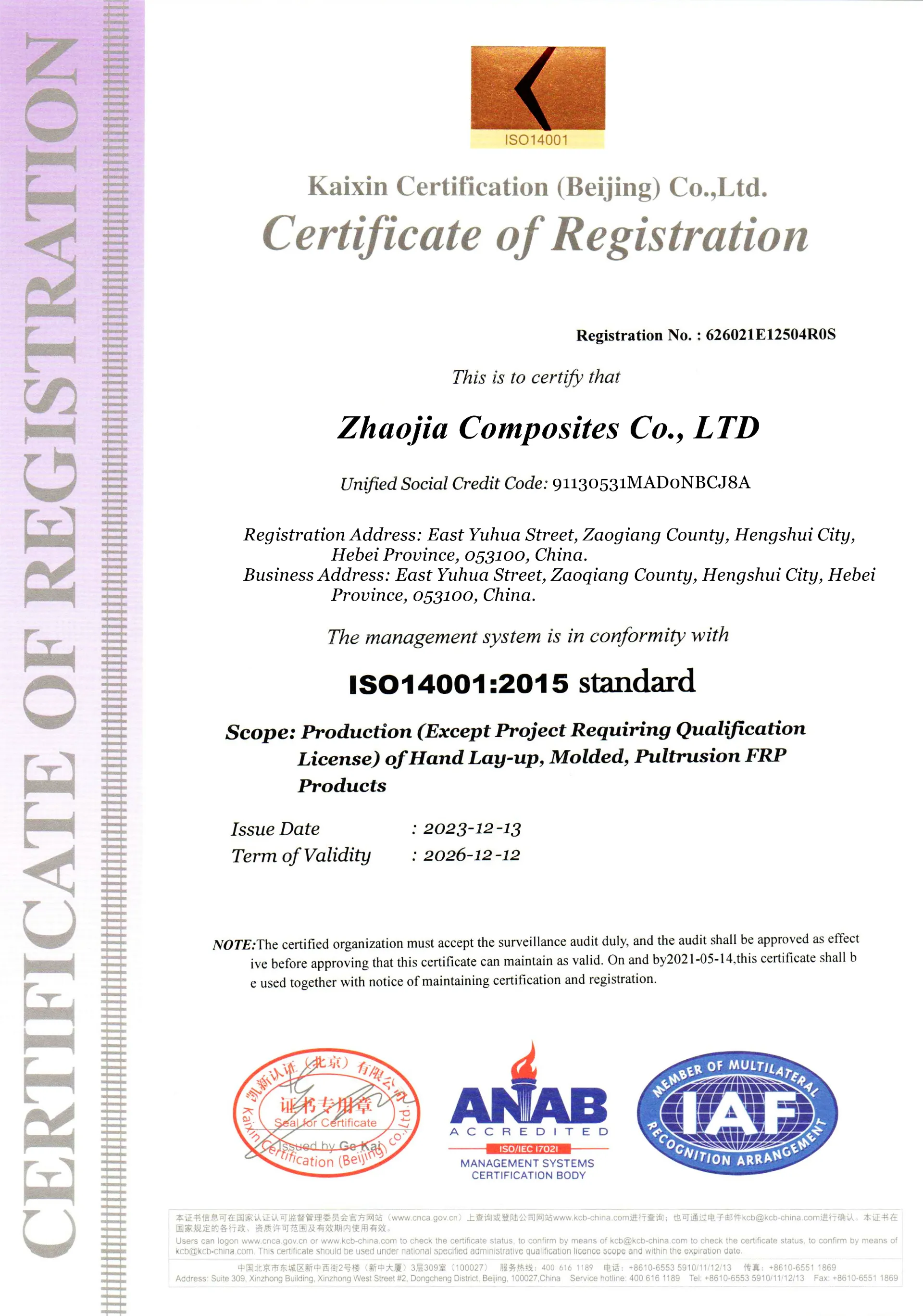loading...
- No. 9, Xingyuan South Street, Dongwaihuan Road, Zaoqiang County, Hengshui, Hebei, China
- admin@zjcomposites.com
- +86 15097380338
- Welcome to visit our website!
water treatment equipment
Water Treatment Equipment Ensuring Clean and Safe Drinking Water
The significance of clean and safe drinking water cannot be overstated. As the global population continues to grow and industrial activities increase, the demand for effective water treatment solutions has never been greater. Water treatment equipment plays a critical role in ensuring that drinking water is free from contaminants and safe for consumption. This article explores various types of water treatment equipment, their functions, and the importance of investing in reliable systems.
Types of Water Treatment Equipment
1. Filtration Systems Filtration is one of the most fundamental processes used in water treatment. Various types of filtration systems, including sand filters, activated carbon filters, and membrane filters, work by removing particles, sediments, and impurities from water. Sand filters utilize layers of sand to trap sediments, while activated carbon filters adsorb organic compounds and chlorine, improving the taste and odor of water.
2. Reverse Osmosis Systems Reverse osmosis (RO) is a widely used technique for purifying water. In this process, water is forced through a semi-permeable membrane that removes a significant percentage of dissolved salts, organics, and other contaminants. RO systems are particularly effective for desalination and are commonly used in areas with limited freshwater sources.
3. Ultraviolet (UV) Disinfection UV disinfection is a chemical-free method to eliminate harmful microorganisms from water. UV lamps emit ultraviolet light that disrupts the DNA of bacteria, viruses, and other pathogens, rendering them inactive. This technology is gaining popularity as it does not introduce any harmful chemicals into the water, making it an environmentally friendly choice.
4. Chemical Treatment Systems Chemical treatment involves adding chemicals to water to remove impurities. This can include coagulation and flocculation processes, where chemicals are added to promote the agglomeration of small particles into larger ones, making them easier to filter out. Chlorine, ozone, and hydrogen peroxide are commonly used disinfectants that help ensure water safety.
water treatment equipment

5. Water Softening Systems Hard water, which is rich in minerals like calcium and magnesium, can cause scaling in pipes and appliances, reducing their efficiency. Water softeners are designed to reduce hardness by exchanging these minerals with sodium or potassium ions. This treatment not only improves water quality but also extends the lifespan of plumbing and appliances.
Importance of Water Treatment Equipment
The investment in water treatment equipment is crucial for several reasons. Firstly, it protects public health by ensuring that drinking water meets safety standards. Contaminated water can lead to the spread of waterborne diseases, posing serious health risks, especially to vulnerable populations such as children and the elderly.
Secondly, effective water treatment is essential for environmental sustainability. As industries discharge pollutants into water bodies, treating wastewater before release is vital to protect ecosystems and preserve biodiversity. Advanced treatment technologies can help remove harmful substances, ensuring that aquatic life is not harmed and that natural resources are preserved for future generations.
Finally, the economic benefits of water treatment are significant. By investing in modern water treatment systems, communities can reduce healthcare costs associated with treating waterborne illnesses and extend the life of infrastructure by mitigating the effects of hard water and corrosion.
Conclusion
In conclusion, water treatment equipment is a fundamental component of public health and environmental protection. By employing various treatment methods, communities can ensure the availability of clean and safe drinking water. As technology continues to advance, it is essential to stay informed about the latest developments in water treatment equipment to make informed decisions that promote health, sustainability, and economic efficiency. Investing in reliable water treatment solutions is not just a necessity; it is a commitment to a healthier and more sustainable future for all.
-
The Rise of FRP Profiles: Strong, Lightweight, and Built to LastNewsJul.14,2025
-
SMC Panel Tanks: A Modern Water Storage Solution for All EnvironmentsNewsJul.14,2025
-
GRP Grating: A Modern Solution for Safe and Durable Access SystemsNewsJul.14,2025
-
Galvanized Steel Water Tanks: Durable, Reliable, and Ready for UseNewsJul.14,2025
-
FRP Mini Mesh Grating: The Safer, Smarter Flooring SolutionNewsJul.14,2025
-
Exploring FRP Vessels: Durable Solutions for Modern Fluid HandlingNewsJul.14,2025
-
GRP Structures: The Future of Lightweight, High-Performance EngineeringNewsJun.20,2025
